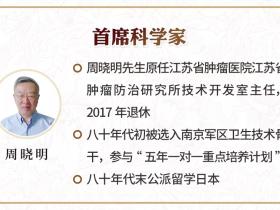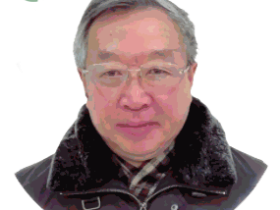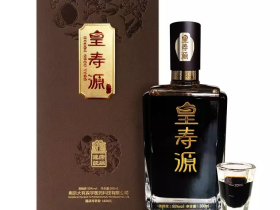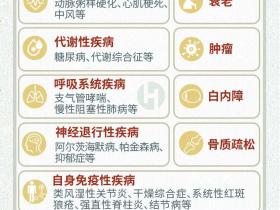慢性炎症与人类健康系列第二讲
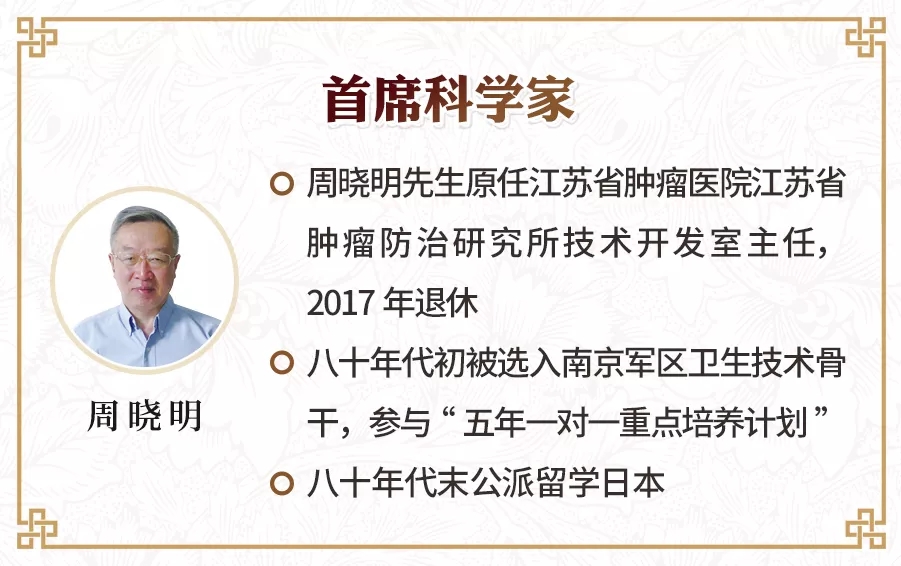
衰老是一个自然过程,与免疫系统对环境的调适与重塑有关。通俗地讲就是机体为适应环境的变化,如环境中病原微生物的入侵,或是自身代谢产物的作用,而发生的对应反应。这个对应反应多数情况下是以炎症的形式表现出来的。这个过程对人体最为有利的形式是促炎症与抗炎症反应的平衡,也称之为健康的衰老。
Aging is associated with adaptation and remodeling of the immune system, but successful aging and longevity require a balance between pro- and anti-inflammatory activity. Nutrition Reviews 2007, 65:S173–S176.
而不健康的衰老,是指机体的抗炎症反应减弱,而促炎症反应增强,二者的失衡最终导致慢性低烈度的炎症,并由此引发一系列与慢性炎症有关的疾病。因此,有西方学者专门为这一现象创造了一个新的名词---炎症性衰老(inflammaging), inflammation + aging.
Aging is associated with adaptation and remodeling of the immune system, but successful aging and longevity require a balance between pro- and anti-inflammatory activity. Nutrition Reviews 2007, 65:S173–S176.
看上去健康的老年人,各个器官与系统中的促炎症因子与抗炎症因子已出现失衡,表现为血液循环中的促炎症因子水平升高。动物实验结果也表明,高龄鼠类(相当于人类70-75岁年龄)冠状动脉中炎症因子的表达也出现失衡现象,促炎症反应处于主导地位。而这就是慢性低烈度炎症的典型表现。
Aging is associated with adaptation and remodeling of the immune system, but successful aging and longevity require a balance between pro- and anti-inflammatory activity. Nutrition Reviews 2007, 65:S173–S176.
炎症因子水平的升高,使得原本平衡稳定的血管内环境发生了改变,变得更易于血液凝集,更易于发生氧化应激,并不断放大血管损伤性反应,促进缺血性心脏病的发生发展。这一系列的病理过程,都是由于炎症因子诱导血管内皮细胞的衰老引起的。这一过程就是我们常说的“内皮性衰老”和“血管衰老”。
We propose that the upregulation of IL-1 can be linked to the activation of various pathophysio-logical programs that underlie the complex biological phenomenon described as "vascular aging". Proinflammatory status of aged arteries may shift the intravascular environment from a hemodynami-cally stable state to a pro-coagulant, pro-oxidant state which may favour an exaggerated response to vessel injury, promoting the development of ischemic heart disease in the elderly. A dysfunction of the cytokine network associates with aging and point to a specific role of IL-1 in endothelial senescence. Immunity & Ageing 2006, 3:4 doi:10.1186/1742-4933-3-4.
值得注意的是,所谓的内皮性衰老,并不意味着内皮细胞自身潜能出现了问题,而是在炎症因子的作用下,内皮细胞的功能发生了改变(功能障碍)。内皮细胞如此,生发内皮细胞的干细胞亦如此。比如,百岁老人的干细胞在适宜的细胞因子和生长因子的环境下,其生成子细胞的能力与年轻人没有区别,表明老年人干细胞的潜能是完好的,只是由于其周围环境中细胞因子的改变,才导致了老年人干细胞的各种潜能出现明显的衰退。
Interestingly, when CD34+ cells from centenarians were put in culture and exposed to optimal concentrations of hemopoietic cytokines and growth factors, their response (differentiated and formed colonies of erythrocytes, granulocytes, and megakaryo-cytes) was indistinguishable (number and size of colonies) from that of young subjects, demonstrating that hemopoietic potential is preserved, but the hemopoietic cytokine network (milieu) undergoes a complex remodeling with age. J Gerontol A Biol Sci Med Sci. 2000;55:B61–66.
类似的情况也发生在动物身上。如果将高龄老鼠的祖细胞置于年轻老鼠的血清中进行培养,这些祖细胞立即就恢复了活力;相反,如果将年轻老鼠的祖细胞放置在高龄老鼠的血清中进行培养,这些原本充满活性的祖细胞就失去了原有的活性。这表明,与衰老有关的干细胞活性的下降,主要受到了环境因素的影响,特别是与炎症性衰老有关的细胞因子的影响。
Similar findings have been reported in aged mouse muscle:Rejuvenation of progenitor cells, in this case satellite cells, was possible by exposure to serum from young mice, and vice versa, demonstrating that the age-related decline in stem cell activity is, at least in part, the result of an age-related remodeling process and the presence of inhibitory factors (likely including cytokines involved in inflammaging) accumulating in the body (serum) of old animals, rather than an intrinsic loss of competency. Nature. 2005, 433:760–764.
炎症因子(主要是白介素1α)调节内皮细胞衰老的证据也可以在临床上得到验证:衰老的内皮细胞出现在冠状动脉硬化斑块表面,这些内皮细胞产生大量的白介素1. 而白介素1能够引起多种不良反应,如抑制内皮细胞增殖、诱导白细胞粘附以及促进血栓形成等。
It is noteworthy that senescent endothelial cells are found on the surface of atherosclerotic plaques and that IL-1 is produced by endothelium on aged coronary arteries. Endothelial senescence is modulated in part by the inflammatory cytokine interleukin (IL-)1α. IL-1 and its family members are expressed in human atherosclerotic vessels, mainly in the endothelium. IL-1α causes multiple responses in vascular endothelial cells including inhibition of cell proliferation, induction of adhesion molecules which bind leukocytes and promotion of thrombus formation. Science 1990, 249:1570-1574.
百岁老人的炎症性衰老总是伴随着抗炎症性衰老的反应,这二者的平衡是他们能够获得健康的衰老过程以及长寿的根本原因。换句话说,对他们而言,不管炎症标记物是否随着年龄的增加而增加(炎症性衰老),只要抗炎症反应仍然完好(抗炎症性衰老),最终的结果就是:基于炎症的疾病将不会发生,或推迟发生,或即使发生了也不会太过严重。
In centenarians inflammaging is always accompanied by anti-inflammaging and their balance is likely crucial to attain healthy aging and longevity. In fact in centenarians we found a complex and peculiar mix of pro- as well as anti-inflammatory characteristics, either phenotipically or genetically. In other words, it wouldn’t matter whether inflammation markers increase over age (inflammaging) if anti-inflammatory activity is still standing (anti-inflammaging): eventually inflammation-based diseases wouldn’t occur or would be highly delayed or less severe. Mechanisms of Ageing and Development 2007, 28:92–105.
衰老的一个常见症状是肌肉减少症(sarcopenia),表现为无力或是虚弱 (frailty),其本质也是炎症反应。实验表明,正是炎症因子(如肿瘤坏死因子)在肌肉中的高表达,引起肌纤维的凋亡,最终导致肌纤维的减少及肌肉的萎缩。通过抑制炎症因子,就可以最大限度的抑制肌肉萎缩及由此引起的虚弱。由此,我们可否将这一现象拓展到其他器官?比如心脏,比如胃,比如各种腺体?因为衰老是全方位的衰老,而不是单一器官的衰老?完全可以!
TNF-α signals transmitted to specific fiber types determine the decision of selecting life or death signaling pathways and are linked to the extent of fiber loss experienced in the aging muscle; such a specific potential may constitute a major proponent in the pathogenesis of sarcopenia. The FASEB Journal 2005, 19: 668-670.
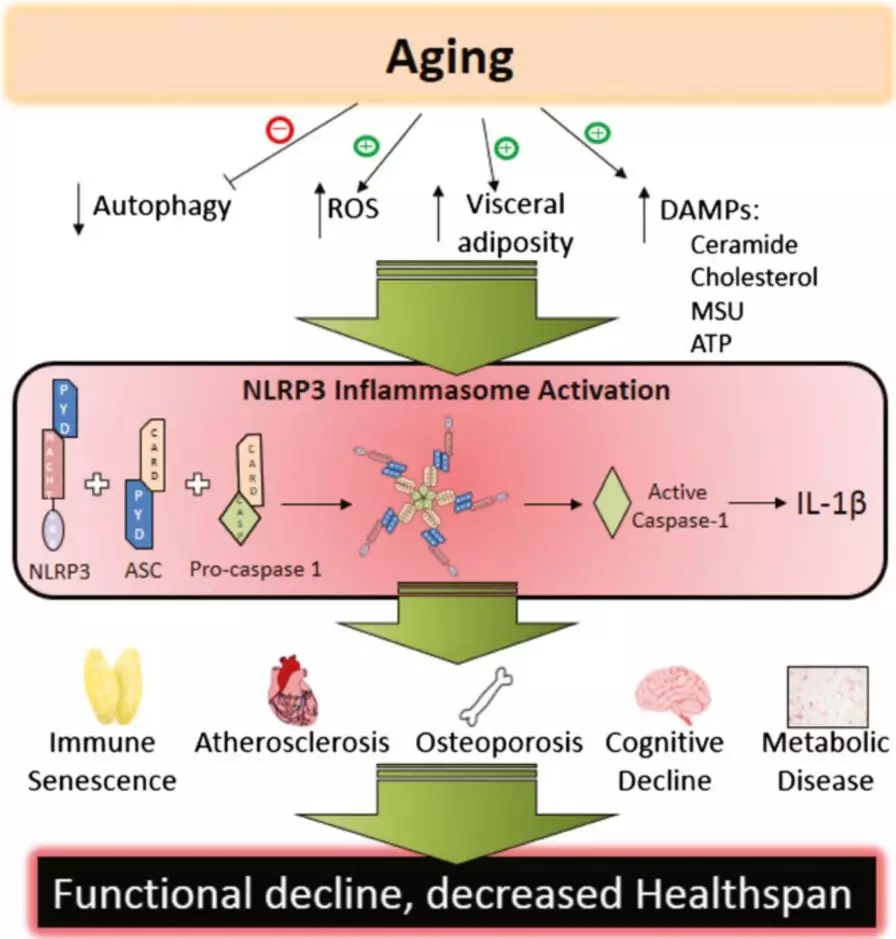

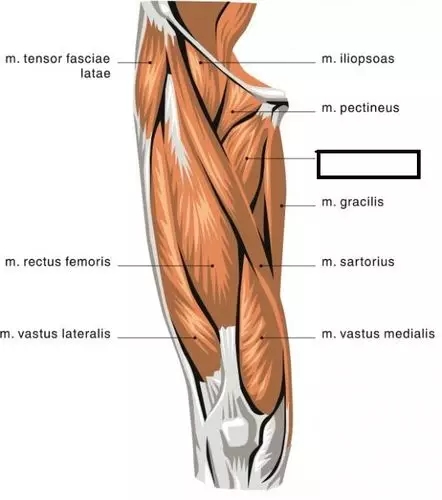
如果我们能够克服肌肉萎缩和骨质疏松,试问:我们还需要住拐杖,坐轮椅吗?答案显然是否定的!


